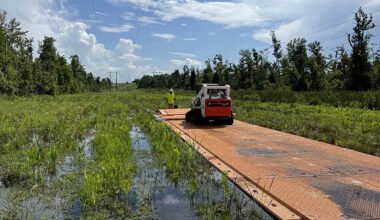Infrastructure development is a critical driver of economic growth, and at the heart of these colossal projects are the vehicles and equipment that enable their execution. Civil construction utes, in particular, have become synonymous with efficiency and reliability in the realm of infrastructure enhancement. These versatile light commercial vehicles are designed to meet the rigorous demands of modern construction landscapes, and their role cannot be overstated.
The Indispensable Role of Utes in Civil Construction
Civil construction projects span a wide range of undertakings, from roads and bridges to tunnels and public facilities. They require a vast array of tools, materials, and workers to be transported to various sites, often across challenging terrains. This is where civil construction utes come into play, providing unmatched capabilities in hauling and accessibility that are essential for timely and efficient project completion.
Fleet Versatility for Diverse Project Needs
One of the key advantages of civil construction utes is their adaptability. These vehicles are not one-size-fits-all; they can be customised with different body types, including tray backs, service bodies, or canopy configurations to cater to specific project requirements. From carrying heavy loads to transporting crew members, civil construction utes mould seamlessly into the diverse needs of the sector.
Adaptability for Remote and Rugged Terrains
Infrastructure projects often extend into remote and rugged areas where access can be challenging. Civil construction utes are designed with durable chassis and elevated suspensions, providing the necessary resilience to navigate through rough landscapes. Moreover, their off-road capabilities ensure that workers can reach any site, regardless of how off the beaten track it may be.
Enhanced Safety and Compliance
The modern civil construction industry places enormous emphasis on safety and regulatory compliance. Beyond mere transport utility, civil construction utes incorporate a variety of safety features like roll-over protection, bull bars, and load restraint systems, enhancing both the safety of the operators and the security of the equipment in transit.
Technological Integration and Efficiency Boosts
Today’s civil construction utes come equipped with advanced technology to enhance efficiency and facilitate seamless project coordination. Features like GPS tracking, in-vehicle communication systems, and fuel efficiency improvements not only optimize the operation of these vehicles but also contribute to the overall efficiency of construction projects.
Environmental Considerations
Infrastructure development is increasingly conscious of its environmental impact. Civil construction utes are being engineered with a consideration for eco-friendliness, featuring improved fuel efficiency and lower emissions. This not only helps companies meet stringent environmental regulations but also contributes to the pursuit of sustainable construction protocols.
Cost-Effectiveness and Economic Impact
Civil construction utes represent a cost-effective solution for many infrastructure projects. Their versatility means that one vehicle can perform multiple roles, reducing the need for specialist machinery and thereby cutting down on operational costs. Furthermore, the robustness of these vehicles translates to reduced downtime and maintenance expenses.
Supporting Local Economies and Job Creation
The proliferation of civil construction utes underpins not only large-scale infrastructure projects but also smaller, community-focused developments. Their use supports local economies by facilitating job creation, both directly within the construction sector and indirectly across ancillary industries.
Innovation and Future Developments
As infrastructure projects become more complex, the demand for innovative solutions in civil construction continues to rise. Future developments in civil construction utes may include enhanced connectivity, electric powertrains, and autonomous operation, further solidifying their role as the backbone of infrastructure projects.
Conclusion
Civil construction utes are an integral component of modern infrastructure development. With the need for resilient and reliable vehicles that can maneuver through various landscapes, convey materials, and ensure the safety of workers, these vehicular workhorses are more than just a means of transportation. They represent a confluence of adaptability, safety, technology, and sustainability, all of which are critical to the success of construction initiatives.
Their contribution extends beyond the practical aspects, and into the realm of economic stimulation and project efficiency. As infrastructure development evolves, so too will the capabilities and applications of civil construction utes. They are not merely vehicles; they are dynamic tools that facilitate growth, development, and prosperity.
From intricate city developments to remote mining operations and sprawling road networks, civil construction utes remain at the forefront of the industry. Their continuous adaptation to meet the changing needs of the sector ensures that they will remain key players in building the structures that define our landscapes. As we move towards a more connected and technologically advanced future, the role of civil construction utes will undoubtedly prove to be more significant than ever before.
In an era where infrastructure development is pivotal to societal advancements, it is the humble yet capable civil construction utes that drive projects forward, making them the unheralded champions of progress.



